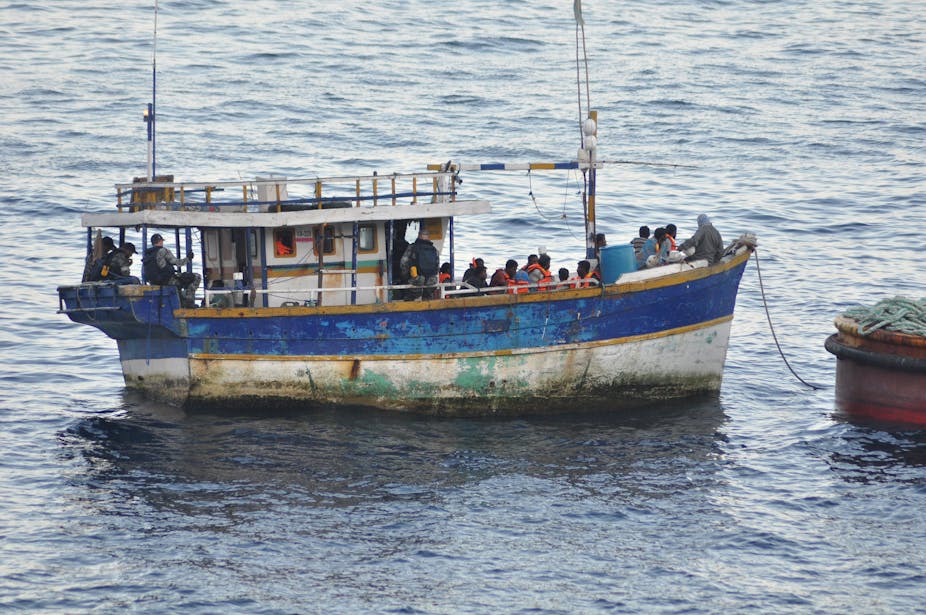Later today, the High Court is due to hear a challenge to the screening and transfer of a boatload of Sri Lankan asylum seekers back to Sri Lankan authorities.
Under international law, return of persons to their country of origin without properly ascertaining if they are refugees is clearly in breach of the “non-refoulement principle”. This principle is the most fundamental provision in the UN Refugee Convention. It says that you cannot return refugees to a country where they face harm.
If the persons on board these vessels are Sri Lankan nationals claiming to fear persecution from their home country, then they need to be given a proper procedure before they can be returned.
Screening of asylum seekers in Australia is not new. It has been carried out since October 2012 to all “unauthorised maritime arrivals” from Sri Lanka. However, this has generally been done on land. The recent procedure is different as it is reportedly being done at sea (via teleconference) and comprises only four questions: name, country of origin, where they have come from and why they have left.
It is not yet clear what legal arguments will be put forward by the claimants in today’s hearing. In previous cases, the High Court has held that asylum seekers detained on Christmas Island have a right to procedural fairness and that transfer of asylum seekers to a third country must meet certain legal requirements.
What is different about this challenge is that the asylum seekers do not appear to have entered Australian territory. Therefore, the case will require reference to issues of international jurisdiction and responsibility to extend the principles from those cases to persons on the high seas.
While reference to these international law principles will be important, the issues will also need to be linked back to Australian domestic law. One argument may be that even though the asylum seekers are not on Australian territory, Australian officials are exercising government authority via the screening process.
This argument is important for two reasons. Firstly, the High Court has jurisdiction under the Australian Constitution to review actions of “officers of the Commonwealth”. Because the screening is being carried out by Australian officials (even if by teleconference), there is scope for the High Court to act despite the locality of the boats.
Secondly, using the principles from the Christmas Island offshore processing case, it is arguable that the officials must comply with “procedural fairness”. This is a very important legal principle which says where a person’s rights, interests or legitimate expectations may be prejudiced, they are entitled to a fair hearing – including the right to state their case and answer any adverse allegations on their claim.
This would clearly apply to an asylum claim where the person is alleging return to a place of persecution and would require much more than the four-question screening process currently being undertaken at sea.
The Migration Act is also likely to be central to the High Court debate. Although some of the protective provisions in this legislation have been watered down, the Migration Act still refers to Australia’s obligations under the Refugee Convention.
This is the linchpin upon which the High Court can require the government to follow proper procedures in line with both domestic and international law.

